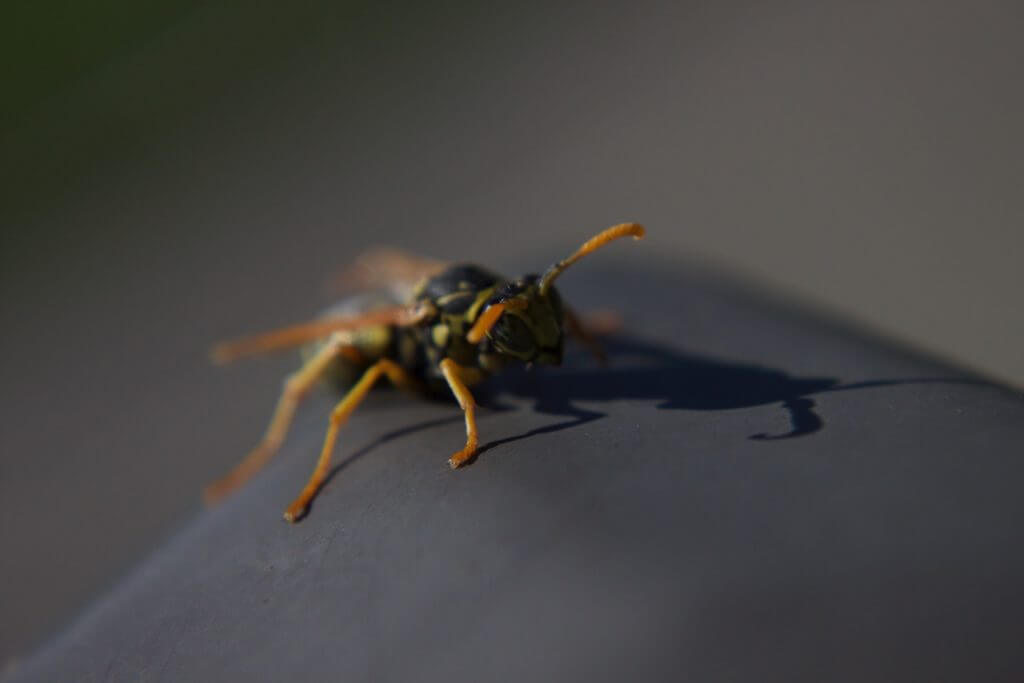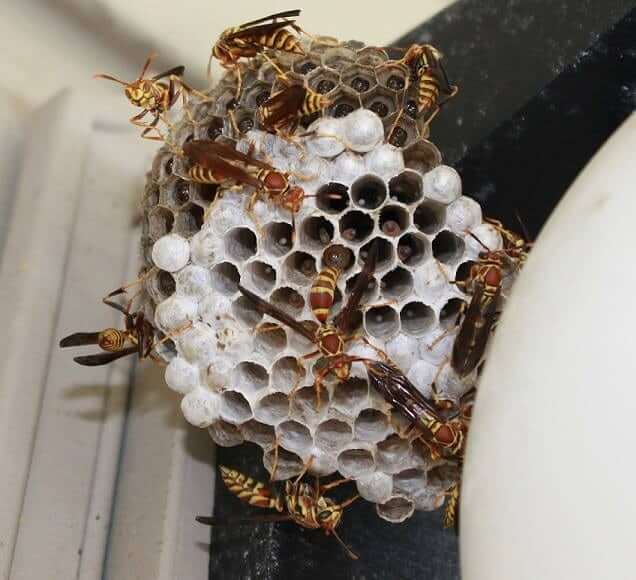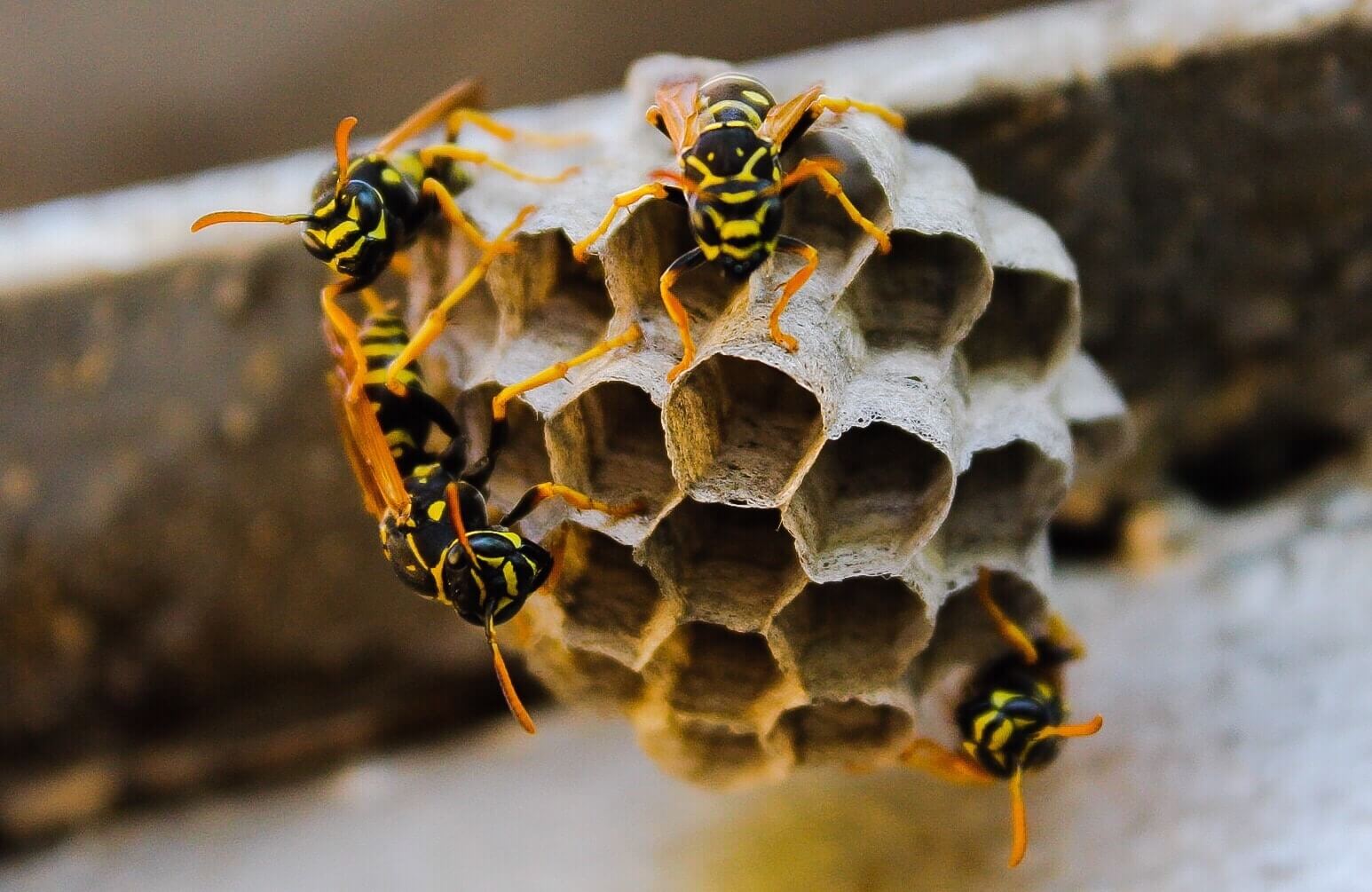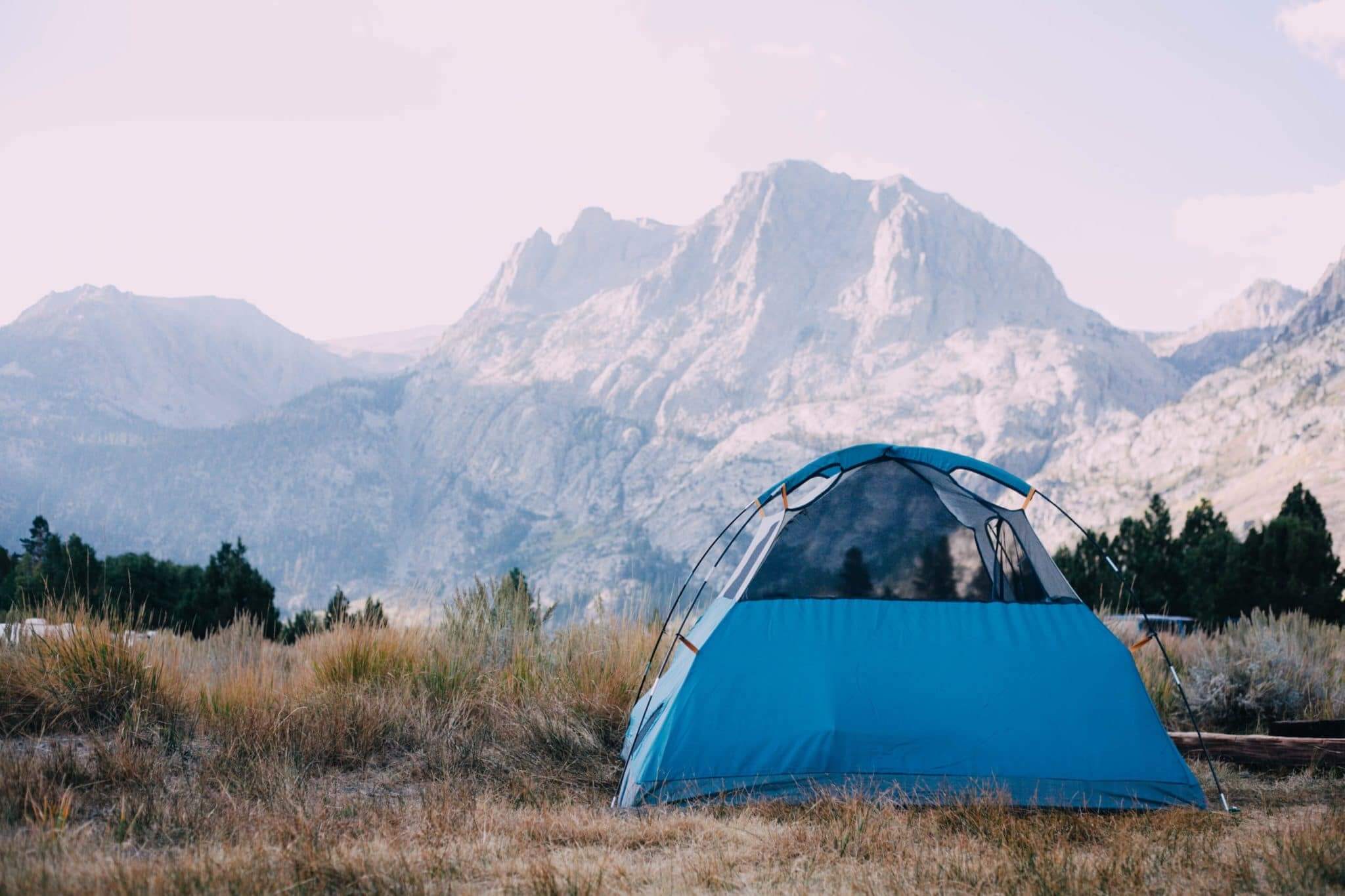Table of Contents Show
Bees and wasps are a real nuisance when they get into the nooks and crannies of your RV. It can be a stunning surprise when opening up a vent cover to find an angry wasp you’ve just disturbed. If you haven’t been bitten or stung while trying to remove the nests, then you’ve gotten lucky or figured out the best way to avoid getting them in the first place. Here is how we keep bees and wasps out of our RV.
Cover RV exterior openings
There are so many little openings on RV exteriors. From windows, roof vents, and doors to little spaces between the slide-out and slide-out frame, bees, and wasps can find their way into your RV.
Windows, roof vents, and doors already have screens, but they need to be inspected for holes and the proper fit. If there are holes, screen repair kits can be found online or at any home improvement store. You may need to purchase a new screen if it does not have a proper fit or holes are too big to repair.
Keep seals lubricated around slide-outs so the rubber stays flexible and will fill the space between the slide-out and the RV walls. This will prevent openings for bees and wasps to enter.
Fill any other holes you find as you inspect your RV. Depending on the surface that needs to be filled, you can use spray foam or sealants specially formulated for use on RVs.
This is just the beginning of how to keep bees and wasps out of your RV. Keep reading for more tips.
- Great Stuff multipurpose Black is a ready-to-use, minimal expansion foam sealant that fills, seals and insulates gaps up...
- Expands to take the shape of gaps and cracks

Cover vents with flying insect screens
Another way to keep bees and wasps out of your RV is to cover vent openings. The refrigerator, furnace, and water heater all have a vent cover.
However, they can’t just be covered with anything. These openings are there for a reason such as venting and/or air circulation. If the circulation around your refrigerator is compromised, it won’t work properly and could present a safety hazard. The same goes for the furnace and water heater vents.
We found covers for all of these vents. Typically called insect screens, they are made from stainless steel screen material. The screen’s small holes keep any bees or wasps out of your RV but still allow for air circulation. There are insect screens for refrigerator vents, furnace vents, stove/range exhaust vents, and water heater vents.
If you choose a DIY option, be sure that your screen material and the material you fasten the screen with is heat resistant. You don’t want to cause more problems by using materials that could start a fire.
- You Will Get: 2 round RV vent covers and 1 rectangular RV vent cover, 6 spring hooks, and 1 installation tool
- Compatibility: Circular mesh size(2.83''x1.26'') fits for Duo-therm, Suburban, and Durotherm furnace vents. Rectangle...
- Includes (3) screens measuring 20" x 1-1/2"
- Fits Dometic refrigerator vents which have 20" long louver openings
Inspect your gas appliances
Did you know that bees like the smell of propane? Appliances like our stove and refrigerator emit just enough propane to lure them into your RV.
No one wants to walk into their RV and hear the constant hum of a beehive hidden somewhere inside. You should regularly inspect all of your gas appliances if you want to keep bees and wasps out of your RV, especially if it has been stored for a while.
Lift the range cover, peek inside of your RV oven, and open all of the vent covers on the outside of your RV. Use a flashlight to get a thorough look inside.
Remember to check the bins where your propane tanks are stored, too.
Pro Tip: While you’re at it, you might want to protect your RV from rodents too! Be sure to read How To Keep Mice Out Of Your RV For Good next.
Remove nests and hives quickly

If you find any beehives or wasp nests near any of your appliances or appliance vents, remove them quickly. The papery material of those nests and hives are a fire hazard and can cause damage to your appliances by clogging vents and preventing airflow.
You may need to hire a professional or you can do it yourself if you know how to do it safely.
Pro tip: If you want to do it yourself, wear thick clothing and cover yourself from head to toe to prevent from being stung. Remove the hive or nest at night when the bees and wasps are less active.
Regardless of how it’s done, they need to be removed quickly to prevent further damage to your appliances and to keep the air moving around them.
Repellants to keep bees and wasps out of your RV
A variety of repellants exist on the market to keep bees and wasps out of your RV. Many are commercially made, but others you can make or create yourself.
Bees and wasps stay away from places where they can see other hives and nests. Some ingenious products can fool them into thinking others are in the area.
Stickers with a honeycomb pattern printed on them will deter bees. Brown paper bags filled with air and tied at the top, look like beehives or wasp nests. There are also wasp nest decoys you can purchase. Place them on or near your RV and the bees and wasps will stay away.
Spray repellants are filled with scents bees and wasps do not like. Although bees and wasps are a nuisance if they get into your RV, we still need them as pollinators so use a spray repellant that does not harm them, just keeps them away.
- Easy Application and Clean Up
- Safe When Used as Directed
Other hints to keep bees and wasps out of your RV
- Avoid leaving sugary food and drinks outside—remind the kids to throw away their sugary snack wrappers and boxes
- Remember to bring in partially full wine and beer bottles and throw away the empties
- Avoid bright colors and floral patterns, especially white and yellow—they’re pretty but they attract bees and wasps
We hope you have found some useful ways to keep bees and wasps out of your RV. Let us know if you have used other methods to keep you and your family safe from bees and wasps.
Last update on 2024-12-26 / Affiliate links / Images from Amazon Product Advertising API










